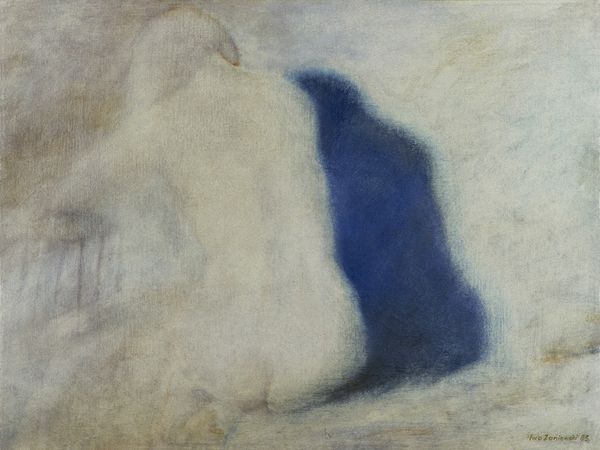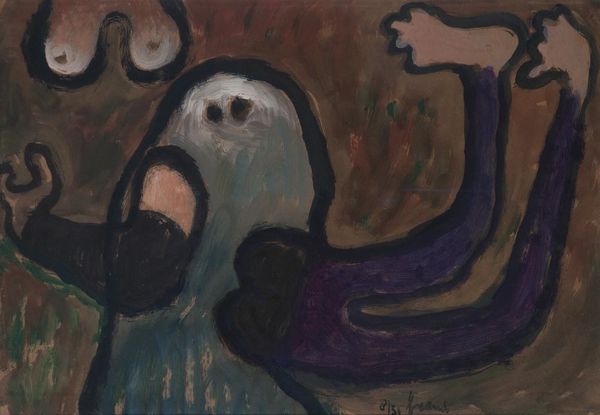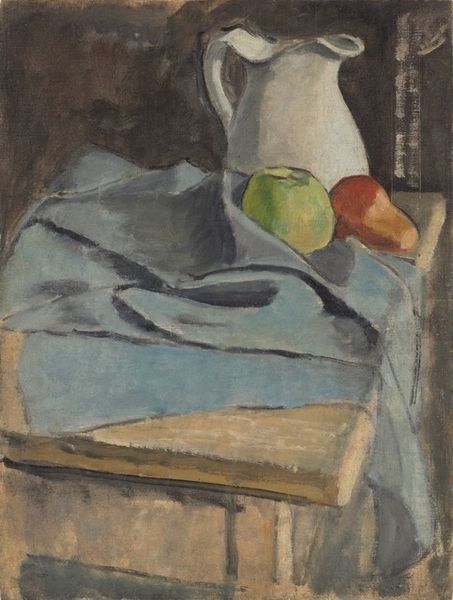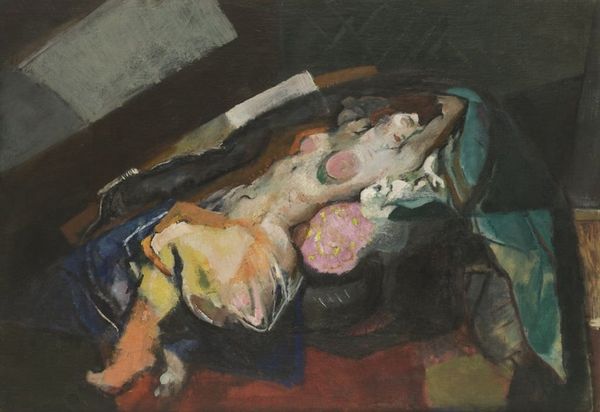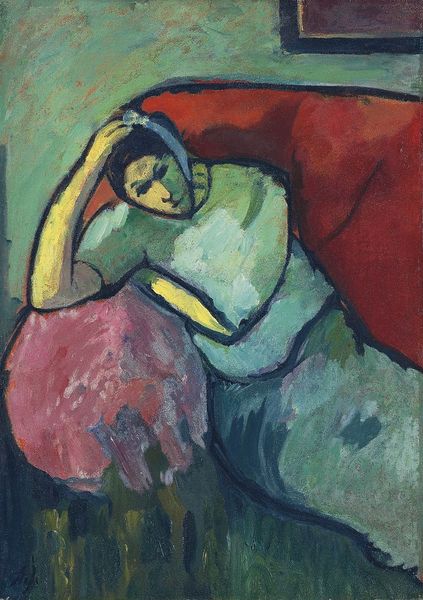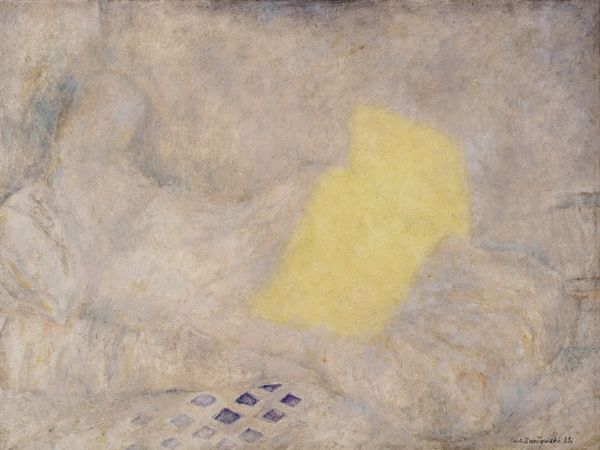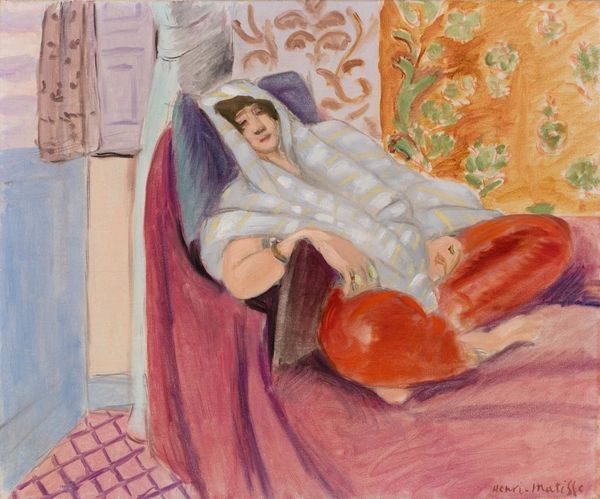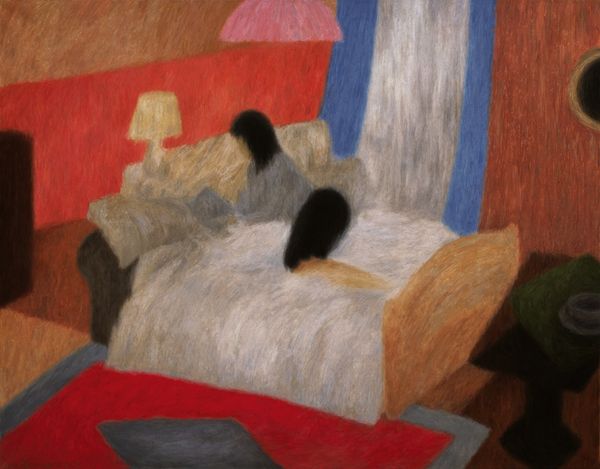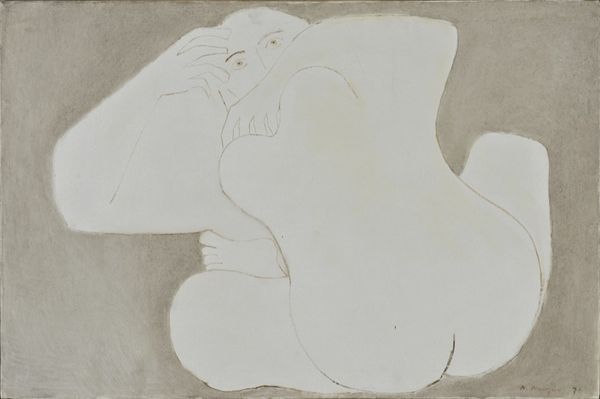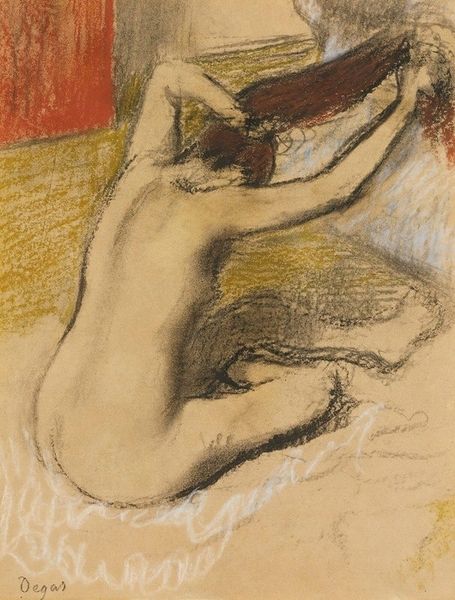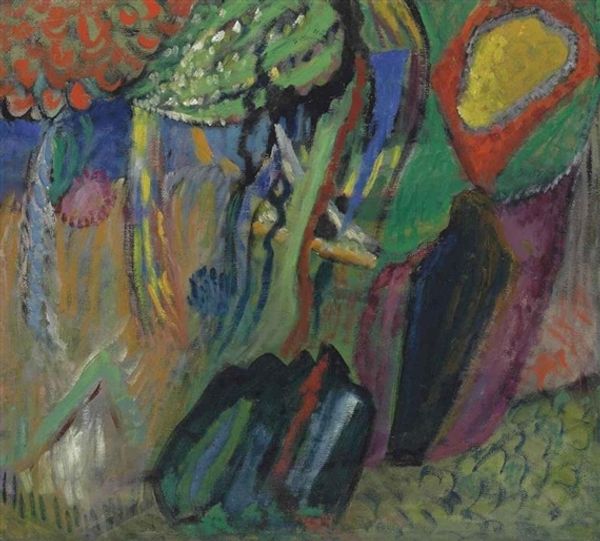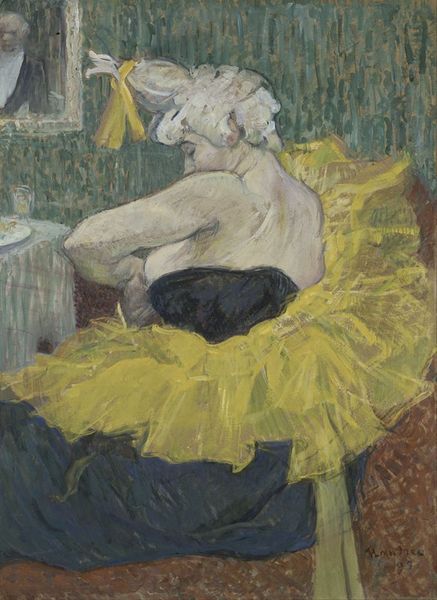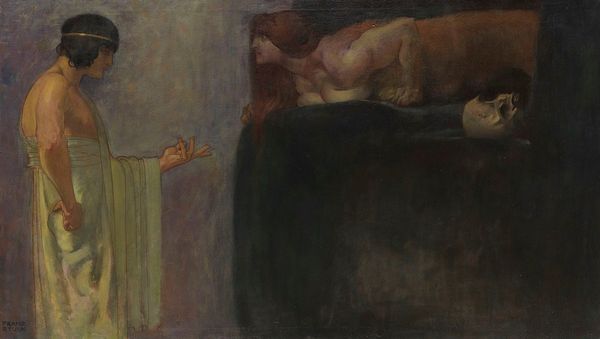
painting, oil-paint
#
narrative-art
#
painting
#
oil-paint
#
figuration
#
oil painting
#
symbolism
#
post-impressionism
Dimensions: 35.2 x 64.4 cm
Copyright: Public domain
Editor: Here we have Paul Gauguin's "The Dreaming," painted in 1892. It’s an oil painting that strikes me as both intimate and slightly melancholic. What do you see in this piece? Curator: I see a canvas saturated with the language of dreams, a space where symbols become intensely personal and potentially universal. The sleeping figures resonate with themes of introspection, cultural memory, and the subconscious. What feelings are evoked for you by the color palette? Editor: It’s quite muted, a lot of earth tones. The blues and yellows feel very deliberate, set against all that brown. What could those specific colors symbolize in this context? Curator: The earth tones firmly root us in the physical, the realm of slumber and the body. Blues, across cultures, are linked to spirituality, the celestial. The splash of yellow? Perhaps the flicker of insight, the sun breaking through in our dreams, memories surfacing from the depths. Do you see anything familiar in the visual style? Editor: It’s got a sort of flattened perspective, reminiscent of early Renaissance painting. Is that intentional? Curator: Precisely! Gauguin pulls from various visual vocabularies, a kind of artistic syncretism to enhance the weight of each symbol, referencing cultural memory and continuity. Do you think the painting has revealed anything about your subconscious desires, dreams, or anxieties? Editor: I hadn’t considered that! It's certainly given me food for thought about the stories we tell ourselves when we're asleep. Curator: Indeed. "The Dreaming" functions as both a mirror and a window—reflecting our inner landscapes and opening to broader cultural narratives.
Comments
No comments
Be the first to comment and join the conversation on the ultimate creative platform.
